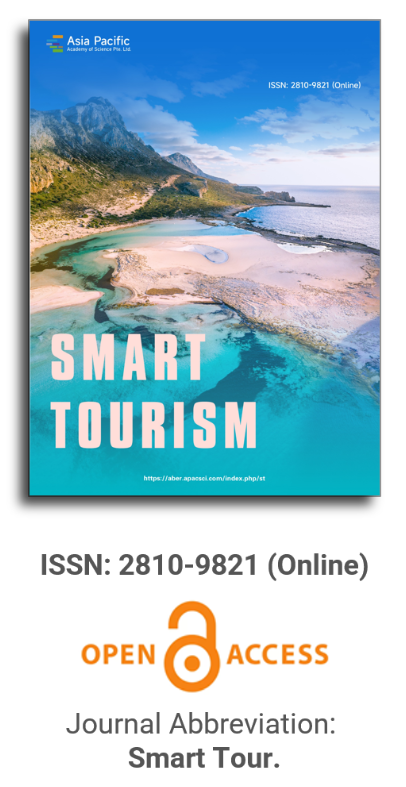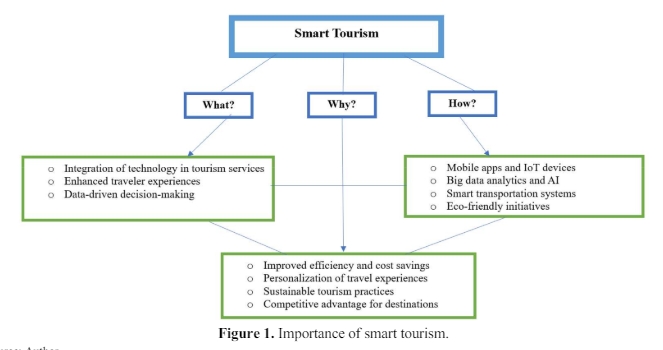


Issue release: 30 April 2020
In view of the current mainstream VR virtual tourism system, because of the heavy virtual scenes and limited network bandwidth, tourists can't browse the WEB pages directly, and they need to download plugins or client systems to browse. This paper studies the lightweight architecture of virtual tourism roaming system. Research technologies such as lightweight modeling of 3D scenes, 3D engine call and lightweight script design, build a cloud storage transmission platform, integrate key technologies such as tour guides, and construct the online Jinggangshan WebVR system. The system based on this architecture will enable visitors to browse Web pages directly, online and quickly in real time, and improve the sense of interaction and immersion of the system.
Issue release: 30 April 2020
Shanghai is the gathering place of the Red Cultural Heritage. Based on a questionnaire analysis of 1,047 respondents on the interpretation of the value of red cultural heritage in Shanghai, this study shows that people lack the impression of Shanghai’s “red cultural heritage agglomeration” and the lack of red heritage value display and interpretation, which is mainly due to the lack of representative red IP in Shanghai. Based on the practice of a major virtual reality display project, fully relying on scientific and technological means to achieve three-dimensional visual value interpretation of red heritage is conducive to the transformation and upgrading of red tourism resources to red tourism bases, the development of red tourism products that are popular in the market, and ultimately promote the protection and utilization of red heritage sites. At the same time, talent training and mobilizing community participation enthusiasm are equally important for the display and interpretation of red cultural heritage.
Issue release: 30 April 2020
Based on the index of tourism Baidu search volume and total tourism income of 667 research units at county scale in Yellow River Economic Belt, this paper uses spatial classification, exploratory analysis of spatial data, nuclear density estimation and other methods to compare and analyze the spatial pattern of county tourism economy in the Yellow River Economic Belt, and then uses the geographical detector model to analyze the influencing factors. The results are drawn as follows. Firstly, from the perspective of spatial distribution pattern, the imbalance of the overall tourism economy is obvious, and the spatial pattern shows a “one big, three small” four core agglomeration pattern. Secondly, from the perspective of spatial correlation pattern, significant HH and LL areas are dominant whether virtual economy or a real economy, and spatial agglomeration effect is obvious. Real economic significant HH areas mainly distribute in the tourism economic developed areas of Shaanxi and Shandong, while real economic significant LL areas are mainly concentrated in the middle and east of Inner Mongolia, the south of Shanxi, most of Qinghai and the north of Ningxia, and scattered in Henan, Gansu and other places. Compared with the entity level, the HH areas of the virtual economy are significantly expanded, mainly distributing in Shandong, Shaanxi and the eastern part of Inner Mongolia. The number of significant LL areas is significantly increased and the distribution range has changed, and the distribution scope of low-value cluster areas mainly distributes in most areas of Qinghai, south and north of Shanxi, and sporadically distributes in Gansu. From the perspective of nuclear density, the spatial structure of virtual and real economy is similar, and the high-value counties mainly distribute in Shandong, Henan and Shanxi forming a high-value gathering area expanding into a core development area. It is worth noting that the virtual economy scope in the north of Shaanxi and the northeast of Inner Mongolia has formed many sub-cores, which indicates that the level of virtual economy in the region is rapidly rising. Finally, according to the results of the Geo-detector model and the coupling matching analysis model, we found the real economy is mainly affected by the resources support level. We also found virtual economy is mainly affected by the level of information technology.
Issue release: 30 April 2020
With the rapid disappearance of traditional villages, the traditional culture contained in them has been in jeopardy, and digital protection has become the international trend and necessary way to protect traditional culture. Under the new situation, “retaining homesickness” has become a realistic demand at the national level. Homesickness originates from the distance of time and space. The satisfaction of homesickness demands not only the protection of culture, but also higher requirements for digital technology. The main obstacles to the digital protection of traditional villages are the lack of mechanism and top-level design, the fragmentation of departments and disciplines, and the emphasis on “form” over “spirit” in digitalization. The key to solve the problem lies in the top-level design from the aspects of system and standard, choosing digital memory content based on landscape gene theory, and designing virtual tourism products that meet the needs of homesickness by taking virtual tourism as the service form.
Issue release: 30 April 2020
As an emerging technology in recent years, virtual reality technology has penetrated people’s fields of material production and life. Nowadays, with the development of technology, the impact of virtual reality technology on the tourism industry is becoming more and more obvious. This paper sorts out and studies the literature of virtual reality and virtual tourism in the past 50 years, discusses the definition of virtual reality and the development of virtual reality technology, sorts out the virtual tourism literature in chronological order, and summarizes the four development stages of virtual tourism. Finally, the existing developments and shortcomings are summarized, and some suggestions for future development are proposed.

Prof. Hung-Che Wu
Nanfang College, Guangzhou
China
Indexing & Archiving
Asia Pacific Academy of Science Pte. Ltd. (APACSCI) specializes in international journal publishing. APACSCI adopts the open access publishing model and provides an important communication bridge for academic groups whose interest fields include engineering, technology, medicine, computer, mathematics, agriculture and forestry, and environment.


 Open Access
Open Access

.jpg)
.jpg)

.jpg)

